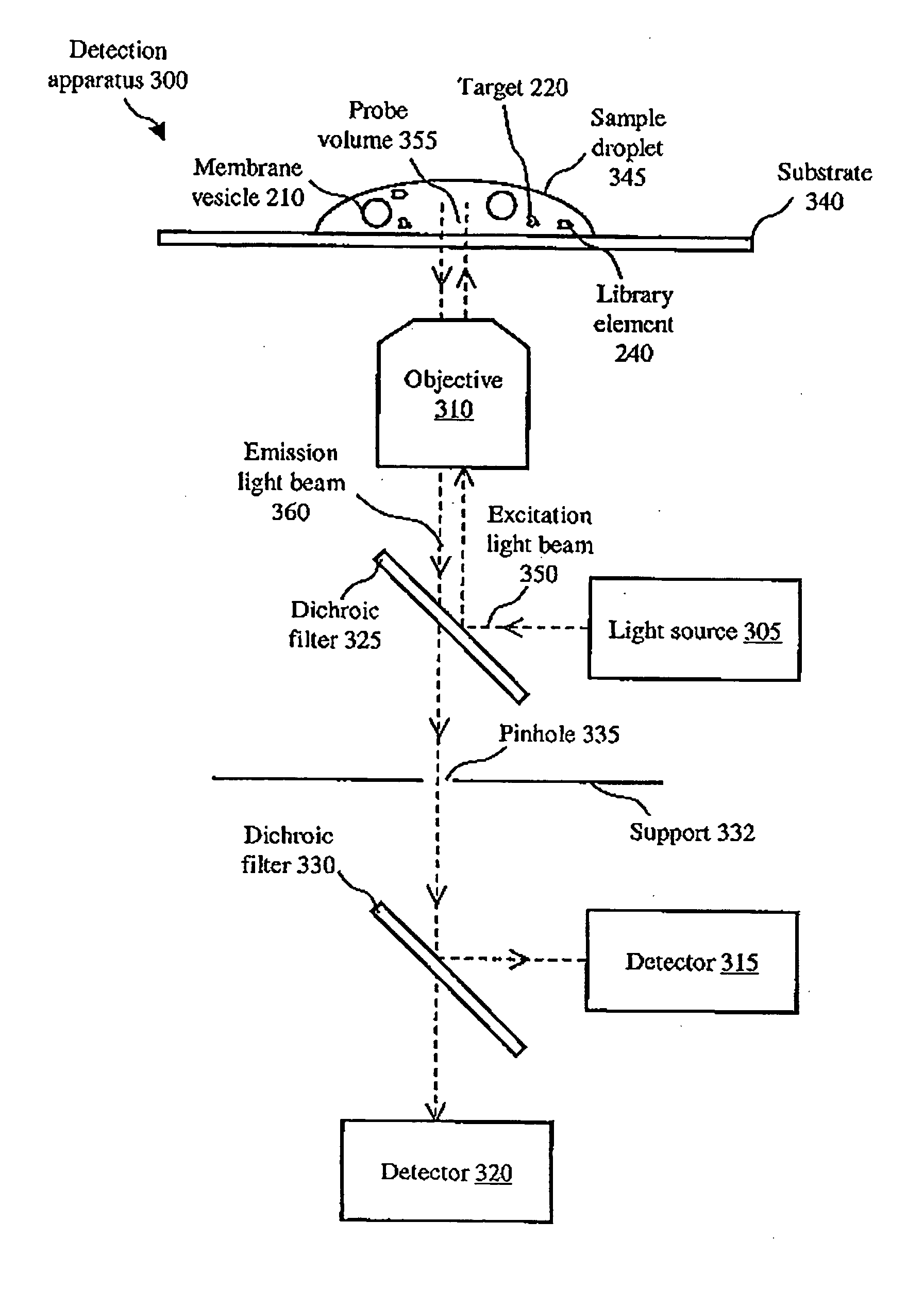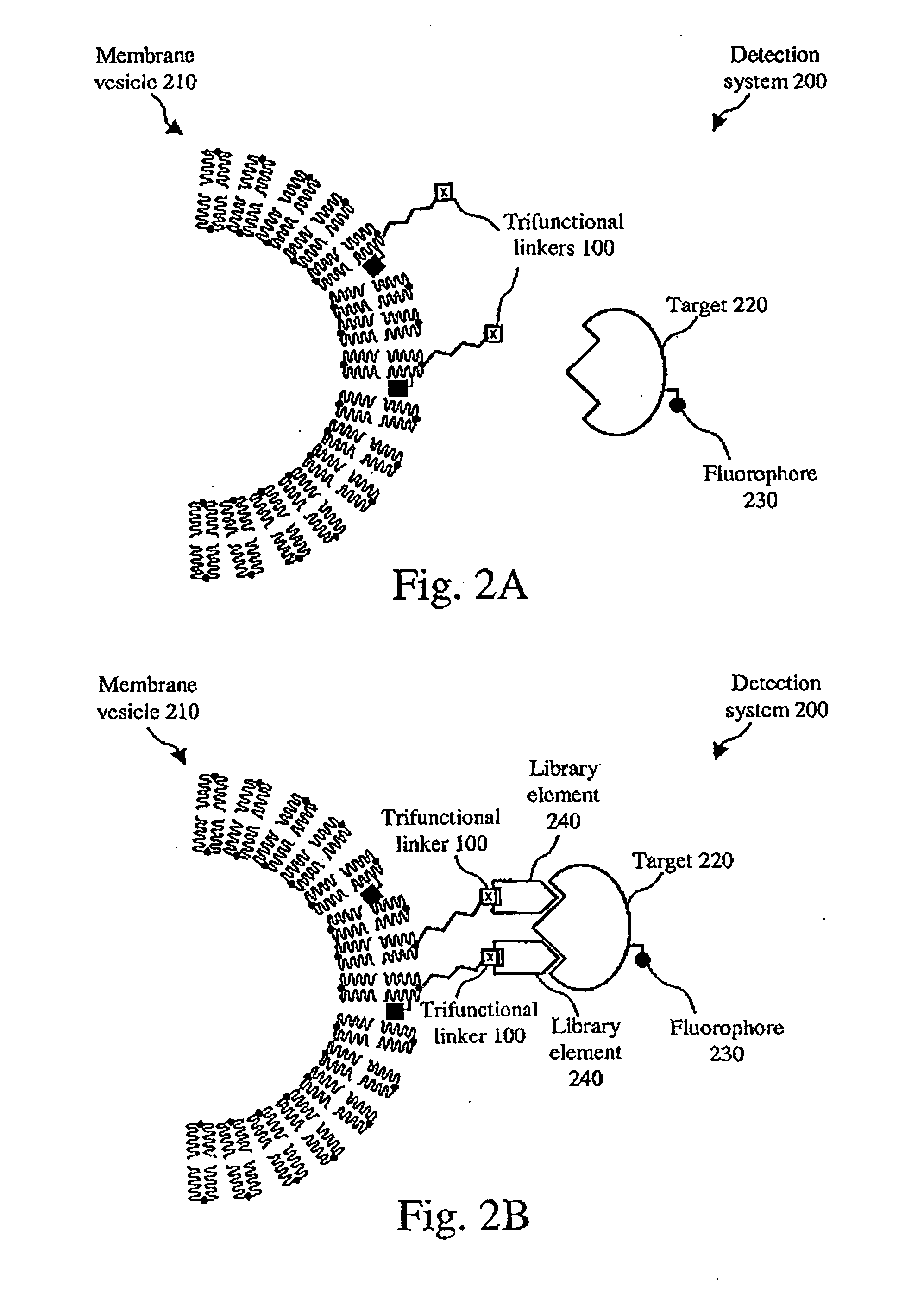High throughput screening using fluorophore labeled lipid membranes and fluorescence correlation spectroscopy
a fluorescence correlation and lipid membrane technology, applied in the field of fluorescence-based assays, can solve the problems of low screening efficiency, low screening efficiency, and low screening efficiency, and achieve the effects of improving screening efficiency, improving screening efficiency, and improving screening efficiency
- Summary
- Abstract
- Description
- Claims
- Application Information
AI Technical Summary
Problems solved by technology
Method used
Image
Examples
Embodiment Construction
[0018] The present invention concerns a method of monitoring and screening molecular interactions. More particularly, the invention concerns a method of monitoring (e.g., chemical coupling reactions) and screening (e.g., display and combinatorial libraries) a sample by FCS using fluorophore-labeled lipid membranes.
[0019] The present invention provides a method to detect and to quantify binding events with target molecules. Such a method can be useful in the development of new pharmaceutical, therapeutic and sensing molecules. The method allows fast analysis times and miniscule sample requirements and can serve as a valuable tool in the screening of large combinatorial libraries for biological and chemical applications.
[0020] A preferred embodiment of the present invention involves use of a trifunctional linker as described in U.S. Pat. No. 6,627,396, such a trifunctional linker including alkyl chain groups for anchoring or attachment to a substrate such as a lipid membrane substra...
PUM
 Login to View More
Login to View More Abstract
Description
Claims
Application Information
 Login to View More
Login to View More - R&D
- Intellectual Property
- Life Sciences
- Materials
- Tech Scout
- Unparalleled Data Quality
- Higher Quality Content
- 60% Fewer Hallucinations
Browse by: Latest US Patents, China's latest patents, Technical Efficacy Thesaurus, Application Domain, Technology Topic, Popular Technical Reports.
© 2025 PatSnap. All rights reserved.Legal|Privacy policy|Modern Slavery Act Transparency Statement|Sitemap|About US| Contact US: help@patsnap.com



